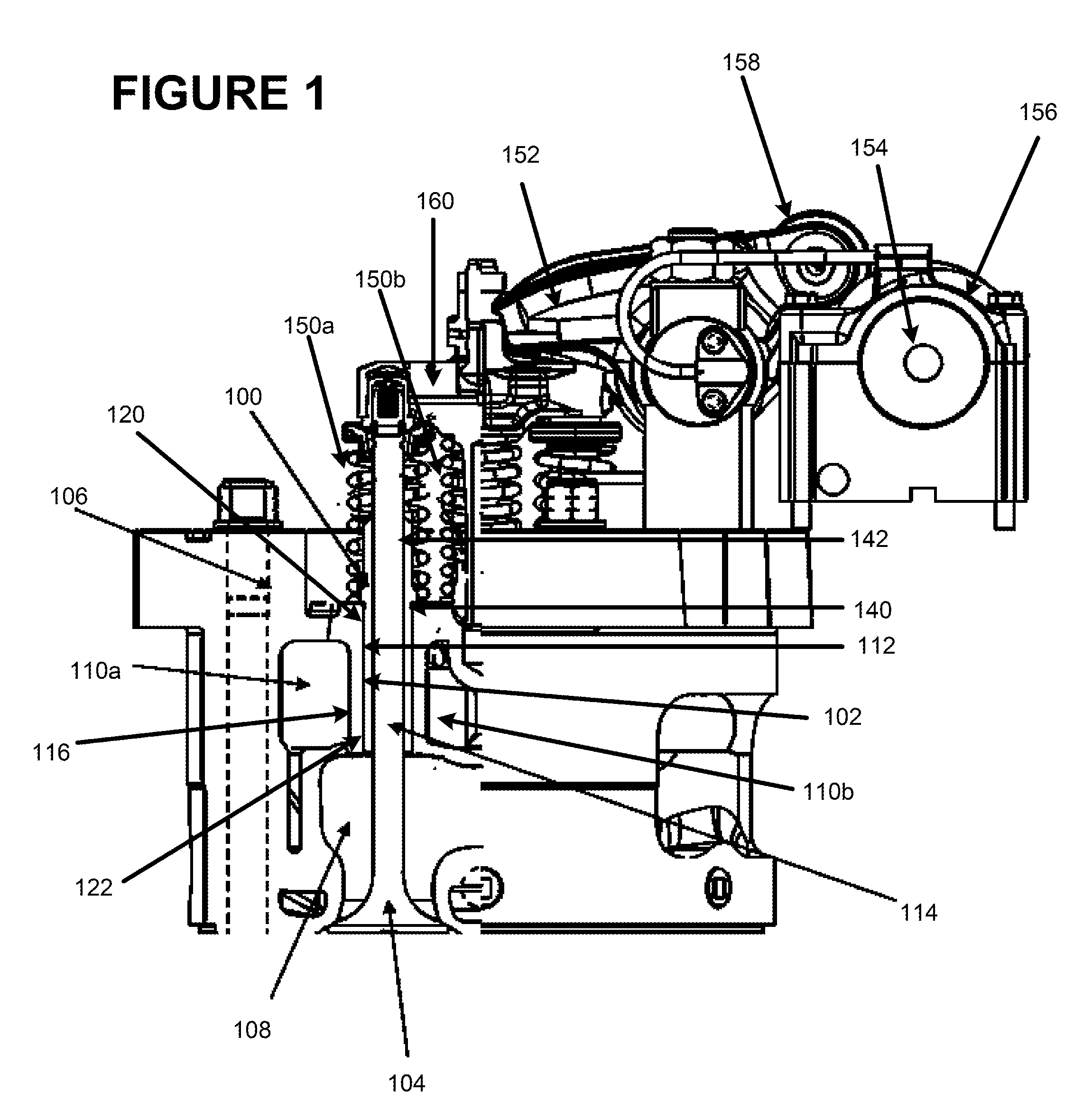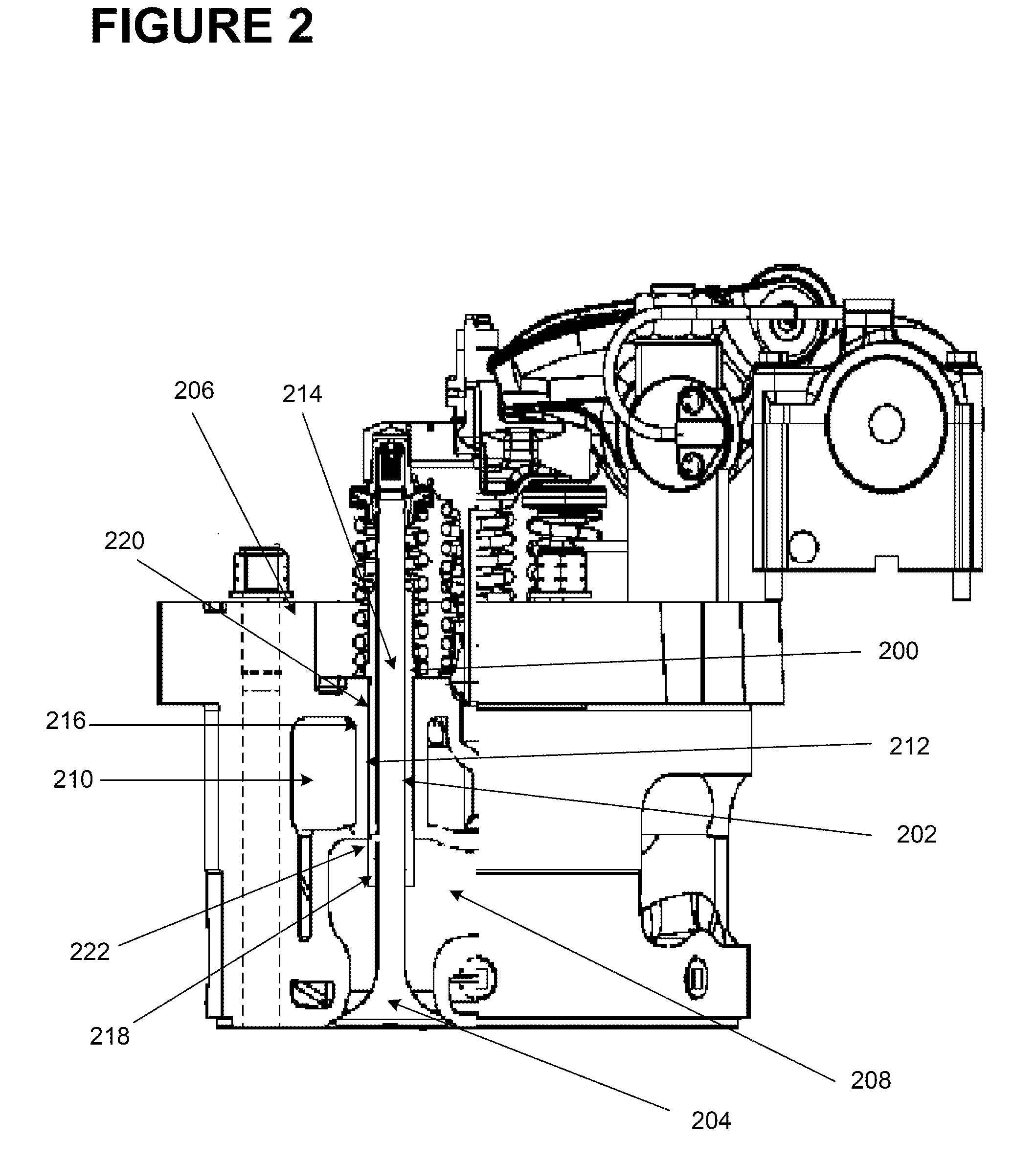Corrosion resistant valve guide
a valve guide and corrosion resistance technology, applied in the direction of valve arrangements, machines/engines, mechanical equipment, etc., can solve the problems of premature failure of the valve guide, corrosion of both the valve and the valve guide, and the valve guide is subject to extremely high thermal and mechanical stress, so as to prevent acidic corrosion and prevent condensation of h2so4
- Summary
- Abstract
- Description
- Claims
- Application Information
AI Technical Summary
Benefits of technology
Problems solved by technology
Method used
Image
Examples
example 2
[0031]FIGS. 4A and 4B illustrate another embodiment of the present invention where the valve guide 400 does not extend into the exhaust port 408 and has more contact than in the embodiment illustrated in FIGS. 3A and 3B. The valve guide 400 is situated in a channel 402 formed between the valve 404 and the cylinder head 406. The valve guide 400 guides the valve stem 414 through the channel 402, which further joins the upper portion of the cylinder head 406 to an exhaust port 408.
[0032]In order to maintain the surface temperature of the valve guide 400 across the length thereof, a recess portion 412 is sized and shaped relative to the water jacket 410 to control the surface engagement between the valve guide 400 and the cylinder head 406. The radial thickness of the cylinder head wall 416 between the water jacket 410 and the channel 402, where the valve guide 400 is situated, is about 0.313 inches. The water jacket 410 is generally maintained at a temperature between about 175° F. and...
example 3
[0036]In yet another embodiment of the present invention, as shown in FIGS. 5A and 5B, a valve guide 500 has the most contact with the cylinder head wall 516 compared to the other embodiments of the present invention. The valve guide 500 is situated in a channel 502 formed between a valve 504 and a cylinder head wall 516. The cylinder head wall 516 generally has a radial thickness of about 0.313 inches between the water jacket 510 and the channel 502. The valve guide 500 guides the valve stem 514 through the channel 502, which further joins the upper portion of the cylinder head 506 to an exhaust port 508. The cylinder head 506 includes a water jacket 510, which is disposed near the channel 502. The water jacket 510 is generally maintained at a temperature between about 175° F. and about 195° F. The surface temperature of the valve guide 500 is generally maintained above the critical temperature of 229° F. to avoid condensation, and thereby acidic corrosion. Although temperatures ma...
example 4
[0040]FIGS. 6A and 6B illustrate yet another embodiment of the present invention where an extended valve guide 600 has two contact portions 620, 622 and a recess portion 612. The valve guide 600 is situated in a channel 602 formed between the valve 604 and the cylinder head 606. The valve guide 600 guides the valve stem 614 through the channel 602, which further joins the upper portion of the cylinder head 606 to an exhaust port 608. The cylinder head 606 includes a water jacket 610, which is disposed near the channel 602.
[0041]In this embodiment, the valve guide 600 includes an extended portion 618 which extends into the exhaust port 608, for heating thereof. The temperature in the exhaust port 608 may be between about 600° F., when the engine is at an idle position, and about 1000° F., when the engine is in full-throttle. The hottest portion of the valve guide 600—the extended portion 618—is heated by the exhaust port 608 and then heats the entire valve guide 600, thereby maintain...
PUM
 Login to View More
Login to View More Abstract
Description
Claims
Application Information
 Login to View More
Login to View More - R&D
- Intellectual Property
- Life Sciences
- Materials
- Tech Scout
- Unparalleled Data Quality
- Higher Quality Content
- 60% Fewer Hallucinations
Browse by: Latest US Patents, China's latest patents, Technical Efficacy Thesaurus, Application Domain, Technology Topic, Popular Technical Reports.
© 2025 PatSnap. All rights reserved.Legal|Privacy policy|Modern Slavery Act Transparency Statement|Sitemap|About US| Contact US: help@patsnap.com



